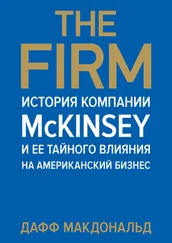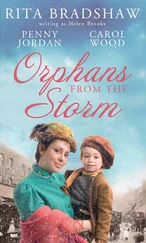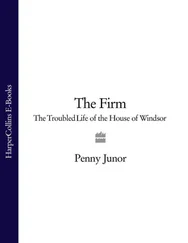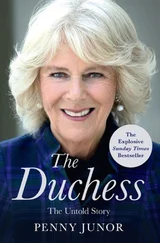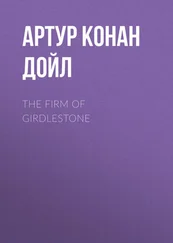She was right to have been nervous that cold April afternoon, however. The eyes of the world were on her, waiting to find fault. There was no guarantee that the crowds would warm to her, no guarantee that there would be any crowds, or viewers for the television coverage; but there were, many of them uncertain how they felt, and she pulled them round. She got it absolutely right. And she has been getting it right ever since. She has slipped into the role of Duchess as one born to it. People have been turning out in their droves to see her and they like her – they like her warmth and the fact that she is so down to earth. Over two thousand people waited outside the church at Sandringham on Christmas Day 2005 for her first church service with the Royal Family and the general consensus was that she was ‘the star of the show’.
It has been quite a year for her, trying to juggle the transition from lover-with-a-life-and-family-of-her-own to fully fledged working member of the Royal Family, with all the commitment and responsibility that that involves, and there have been occasions when her loyalty has been divided – times when her children have felt second best. Friends say she has become regal and that she is not averse to people dropping a curtsey when they meet, but as Paul Arengo-Jones (who ran the Duke of Edinburgh’s Award International Association) said of Sophie, Countess of Wessex, ‘If you want her to be an HRH you have to put her in a glass case,’ and, ‘Yes, she has become grand; grand enough for us to be able to sell her. It would be an embarrassment … if she didn’t turn up suitably dressed or say the right things to people.’ Courtiers at Clarence House say Camilla has hardly changed at all, she’s a smart cookie, no fool, and can be formidable even, but still very approachable and friendly and more relaxed and informal than members of the family that were born to it.
She has kept her house in Wiltshire and, although her children do occasionally go to Highgrove, they more frequently get together at the old family home, Raymill. Her family are still of prime importance. On Christmas day she had lunch with the Royal Family at Sandringham and then, leaving Charles with his family, drove to her sister Annabel’s house in Gillingham, Dorset to have Christmas dinner with her father, her own children and her sister’s family. She had never spent a Christmas apart from her family and was determined that this would be no exception. A few days later she travelled north to meet Prince Charles at Birkhall for New Year.
Highgrove bears very little trace of her. A photograph sits in the drawing room in a silver frame – oddly enough it was a wedding present to Charles and Diana. Otherwise there is no sign that a woman now lives in the house and certainly none of the clutter that used to fill her own house years ago. The staff there like her; they find her friendly and easy. Charles doesn’t fraternise with them – Camilla quite often goes into the kitchen for a chat. She has taken on eleven charities since her marriage, which gives her a total of fourteen but, unusually for an HRH, she decided she didn’t need or want ladies-in-waiting. She simply has a small staff of three – Amanda MacManus and Joy Camm, who have been with her for several years, are now official members of the Household as part-time Assistant Private Secretaries, and she has one full-time Assistant Private Secretary, Katy Golding. She also has someone to help with her wardrobe, who had her work cut-out for Charles and Camilla’s trip to America in November 2005. The press reported that she had taken ninety outfits for the seven day tour. It was actually nearer fifty, and inevitably her choice of clothes was a subject of much debate.
The American tour was Camilla’s greatest triumph. It was their first official overseas trip together as man and wife – with him introducing her repeatedly as ‘My darling wife’ – and what she demonstrated above all was her determination to be just that. She made no attempt to steal the limelight; she was there as his consort to support him and keep him company and cheerful. As Tina Brown, the British born New York magazine editor wrote, ‘One of Camilla’s feats is that she understands Prince Charles’s language and simultaneously translates its meaning, which is often the opposite of what he says.’ And she teases him – still the only person to get away with it. When they signed the visitors’ book at a school in Washington, she lunged for his pen to sign her own name and then playfully dangled it in front of him while he tried to snatch it back. So often throughout the trip the cameras were on her but she made sure that she stood close by the Prince so that he would be in the photographs too.
It was a gruelling trip for a beginner – twenty-one engagements in seven days, encompassing New York, Washington, New Orleans and San Francisco – and she was under the spotlight remorselessly, knowing that in this, the biggest media market in the world and the country that took Diana to their hearts, she would be harshly judged. And judged she was … After day one, the Post dubbed her ‘Frump Tower’, saying her navy velvet cocktail dress was better suited to a choirboy in Westminster Abbey than to a guest of honour at the Museum of Modern Art. The New York Times , meanwhile, said that black stilettos were the sign of a woman ‘really, really trying’ and by implication failing. But as one of the Prince’s aides says, ‘They look down their nose at everyone. If God turned up for a tour of America they would find a way to be rude about him.’ And as Caroline Davies in the Telegraph remarked, ‘In this surgically enhanced ultra-brite milieu, where young, skeletal trophy wives overdressed in inappropriate ball gowns posed with their wizened, wealthy husbands, she probably did look different. Thank goodness.’
What she proved to everyone on both sides of the Atlantic was that she doesn’t feel the need to dress like a woman half her age, or have her teeth bleached and every wrinkle and laughter line surgically removed. She is happy in her own skin, and confident enough to laugh at herself. When complimented on a fuschia-pink outfit she replied, ‘It’s probably the same colour as my face.’ And when the actress and comedienne Elaine Stritch marched up to her and said, ‘No bullshit, you look great,’ she replied, ‘You need eye-glasses.’
No one had quite known what to expect in America but the general public appeared to agree with Elaine Stritch. And the fact that the style writers had so completely failed to understand or appreciate what Camilla is all about, made the newspapers in Britain leap to her defence and the American public all the more enthusiastic in their welcome. In Washington, where, watched by the Prince of Wales, she delivered a moving speech about osteoporosis and her personal experience of the disease with her mother and grandmother, the crowds cheered and clapped ecstatically. And in San Francisco, where she flouted the accepted protocol that members of the Royal Family don’t eat in public, and munched her way around a local organic farmers’ market sampling the produce, the public simply loved her.
They loved them both. The reception from students when Prince Charles arrived at Georgetown University for a seminar on Faith and Social Responsibility wouldn’t have been out of keeping at a Rolling Stones concert. More than a thousand students were screaming and shouting and reaching out to try and shake his hand, and when he emerged at the end of the seminar one-and-a-half hours later, the crowds were still there. According to the Principal, Bill Clinton was the only other visitor who had ever been given such an enthusiastic reception. And when he delivered a speech in San Francisco at the launch of his Business and the Environment Programme on the West Coast, someone got to his feet and said, ‘Why can’t you be our President?’
Читать дальше
Конец ознакомительного отрывка
Купить книгу


